
This article by ABT dancer Sascha Radetsky addresses stereotypes about male ballet dancers.
- Subject:
- Arts Education
- Dance
- Material Type:
- Reading
- Provider:
- Newsweek
- Author:
- Sascha Radetsky
- Date Added:
- 02/26/2019

This article by ABT dancer Sascha Radetsky addresses stereotypes about male ballet dancers.

This anatomical image is a profile view of the hip and knee in proper and inproper alignment. It demonstrates lordosis, flatback, and swayback as well as balanced, neutral posture.

In this lesson plan students explore different movement qualities using imagery and improvisation.

This lesson is designed to follow The Element of Energy: Force adn Effort. In this lesson student use improvisation exercises to explore movement qualities and dynamics.
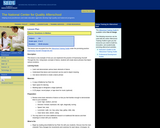
In this lesson, students will review basic elements of dance that will prepare them for creating movement that depict specific emotions.

This video features highlights from Pontus Lidberg's Giselle, danced by Ballet du Grand Theatre de Geneve. It is the original, romantic storyline with a contemporary setting and a modern movement vocabuary.

Minus 16†is based on excerpts from other pieces in Naharin’s repertory, including “Mabul†(1992), “Anaphaza†(1993) and “Zachacha†(1998). Although the piece has a defined structure, it is tailored differently for each dance group, and features improvisational elements as well as audience participation.

In this lesson students will identify and define curved, straight, zigzaged, and spiral lines. Students will explore the lines using both axial/non-locomotive and locomotive movements.
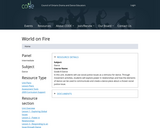
Students will explore how they can communite gloable issues through movment. Students will use the graffiti method once a global issue has been selected to expand their knowledge about the issue and before they move to experiment using the elements of dance. Students will discover how they can build a dance sequence based on what they discovered about their topic.

In this lesson students will understand the relationship between body lines and shapes. They will participate in teacher guided improvisations exploring shapes using both axial and locomotive movement. Students will also identify shapes as they are demonstrated by other dancers.
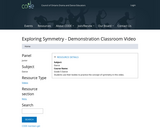
This segment illustrates dance as a form of both communication and artistic expression. Elements and conventions of dance are integrated with the math curriculum. Students use their bodies to represent the fundamental concept of symmetry in math and dance.The students show how learning sophisticated concepts can be fun.

The purpose of this lesson is to explore the role of African culture in modern dance in America. The lesson will focus on three key areas. The first area will examine the Afro-Caribbean slave roots that were a part of modern dance and the ways that modern dance movements and themes reflected daily life activities. The second area will focus on how modern dance reflected issues of black pride, self-expression, and identity. The third area will explore how modern dance themes of social justice and activism evolved in response to a racist American society.

This lesson is designed to follow Communication: Expressing Feeling Through Movement. in this lesson students create original choreography expressing contrasting emotions. They are assessed using the provided Performance Rubric. Students then discuss how body movement changes as emotions change.
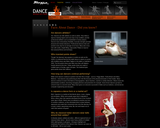
This site offers a variety of facts to spark conversation, interest or answer questins students may have about dance. Teachers may use this webpage for warmups, open discussion, or a little fun with trivia.
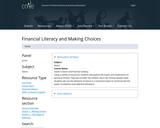
Using a variety of resources, students will explore the impact and implications of personal choices. They will consider the media's role in the choices people make. Students will use the elements of dance in a movement piece to communicate the power of addiction and addictive behaviour. It is recommended that consideration and sensitivity of students within the class be exercised during learning in both lesson one and two due to the nature of the content being explored.
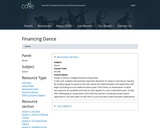
Students will examine important elements of careers in the dance industry. By inviting a guest to speak to the class about Arts Administration, the exploration will begin by looking at non-traditional dance jobs. From there, an examination of what dance grants are available and how an artist applies for one is embarked upon.

In this lesson students pair up to explore mirroring and shadowing (leading and following) with axial and locomotive movements. Student learn the ettiquette of leading and following and apply their knowledge in creating a "Mirror and Shadow" dance. This lesson includes an assessment rubric and a worksheet to facilitate student written responses.
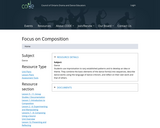
Students use improvisation to vary established patterns and to develop an idea or theme. They combine the basic elements of the dance form(s) into sequences, describe dance works using the language of dance criticism, and reflect on their own work and that of others. Through their compositions, they demonstrate the basic movement skills of the dance form(s) studied.

Students will collaborate with a group of students and select a Culture Project to complete together in school. The group will choose, design and plan and implement what the groups roles will be and what materials are needed to complete the project. The teacher should allow the students to work on projects in school so that equal participation is taking place and can be observed. The students may select the countries in the folktale unit to research or one of their own as long as the project goals are met and agreed upon by all members in the group.This lesson was developed by Lisa Bruet as part of their completion of the North Carolina Global Educator Digital Badge program. This lesson plan has been vetted at the local and state level for standards alignment, Global Education focus, and content accuracy.

Students will learn and perform the Mexican Hat Dance. This lesson was developed by Sarah Owen-Palethore as part of their completion of the North Carolina Global Educator Digital Badge program. This lesson plan has been vetted at the local and state level for standards alignment, Global Education focus, and content accuracy.